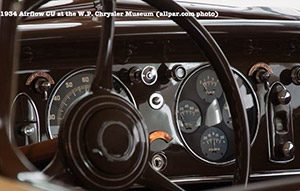 Even though considered as the “smallest of the Big Three,” Chrysler has many impressive firsts under its belt. In the 1930s alone, Chrysler patented 20+ parts and systems that have directly affected car design today.
Even though considered as the “smallest of the Big Three,” Chrysler has many impressive firsts under its belt. In the 1930s alone, Chrysler patented 20+ parts and systems that have directly affected car design today.
Below are just a dozen of the many engineering innovations in which Chrysler was first to market:
- Overdrive
- High compression engine
- Bonderite painting process (removal of oil prior to body panel painting)
- Replaceable oil filter (the only US automaker at the time to provide them as standard items)
- Four-wheel drive hydraulic brakes (improvement upon the original Lockheed design)
- Rubber engine mounts (to reduce vibration)
- Adjustable front seats
- Full range crankshaft impulse neutralizer and vibration damper — first used in 1928 and still in use today on all (or nearly all) cars
- Built-in defroster vents
- Powered convertible top
- Electric windshield wipers
The Airflow model was the first car to use scientific weight distribution and synchronized front and rear springs for an anti-pitch ride. The body provided most of the structural strength. Amola steel was used. [www.allpar.com]
However, these advancements were tempered by the vehicle’s rushed assembly process. Mere months after design was complete, the Airflow was put into production. Due to its unique design and numerous of new components, assembly was rushed, expensive, and poorly executed. According to Fred Breer, son of Chrysler Engineer Carl Breer, the first 2,000 to 3,000 Airflows to leave the factory had major defects, including engines breaking loose from their mountings at 80 mph (130 km/h).[Wikipedia]

Left:1934 Chrysler Airflow [photo courtesy of motorbug.com]
Right: Ferdinand Porsche with his Volkswagen prototype [photo courtesy of www.fourtitude.com]
